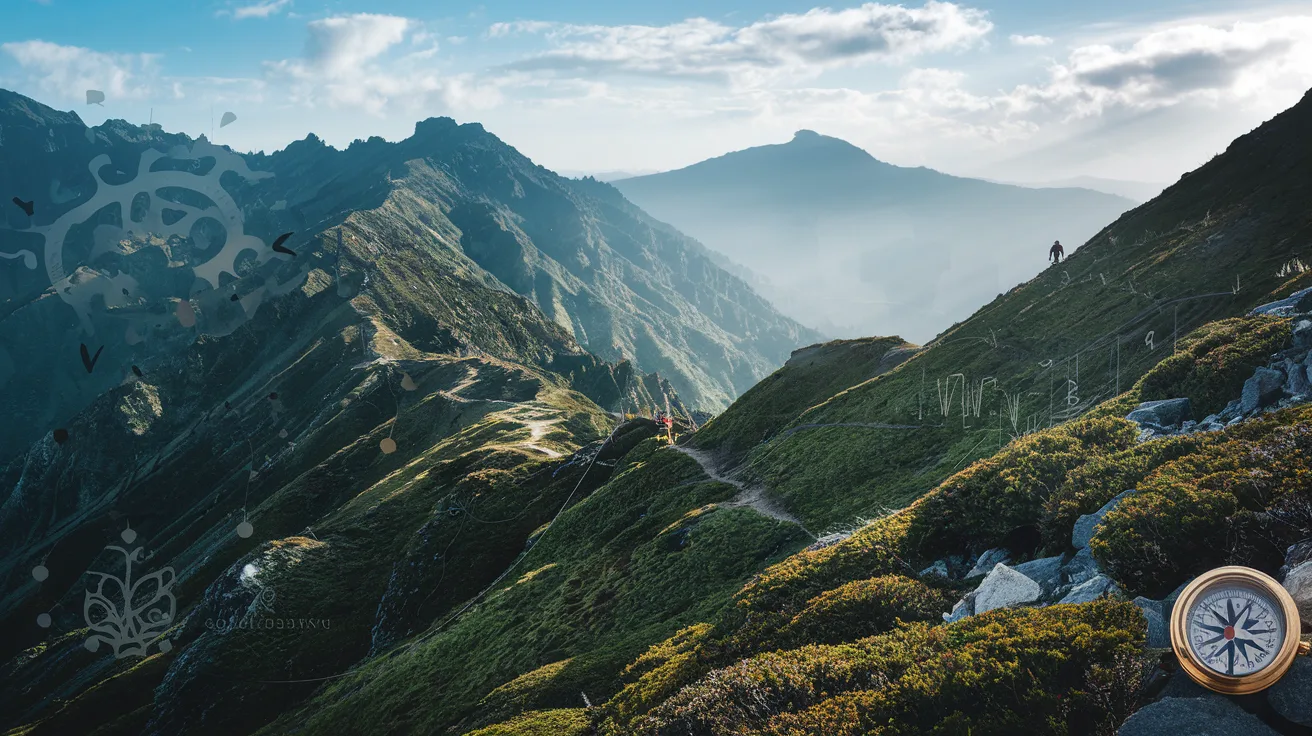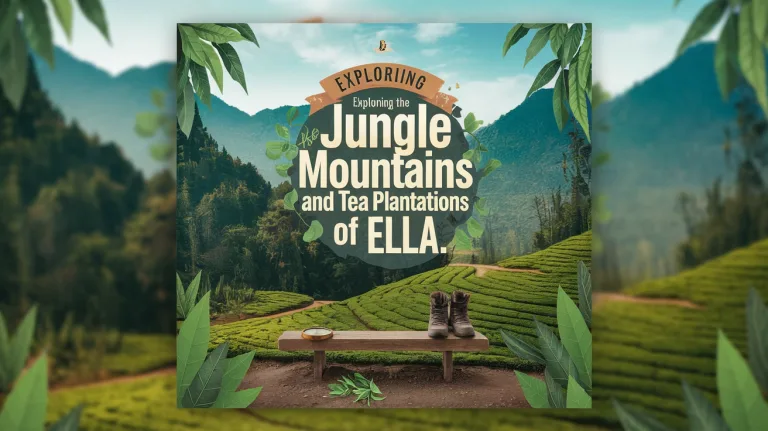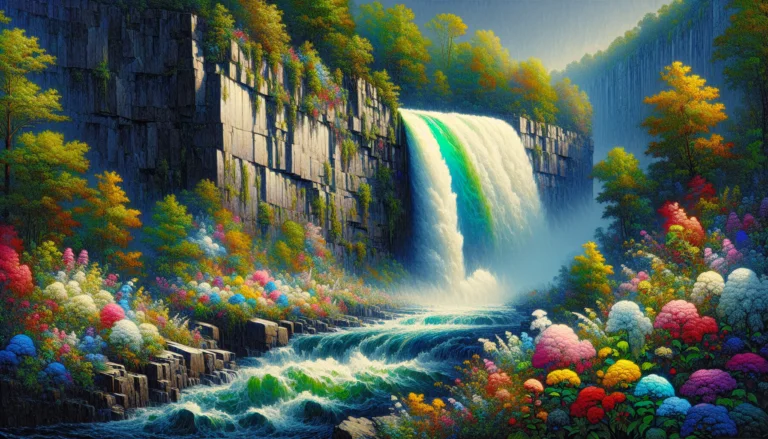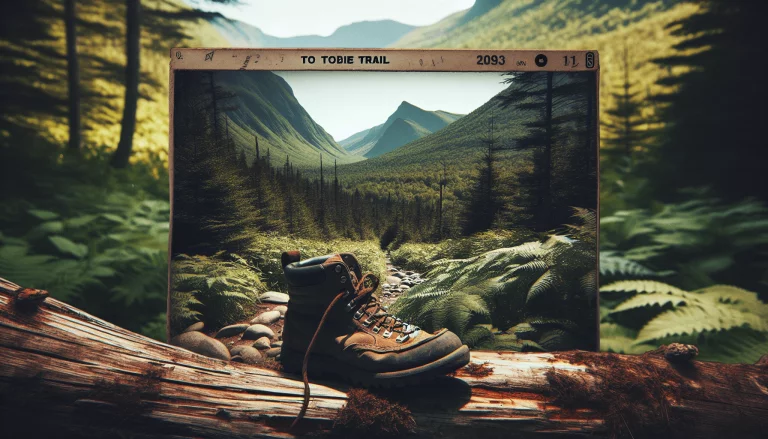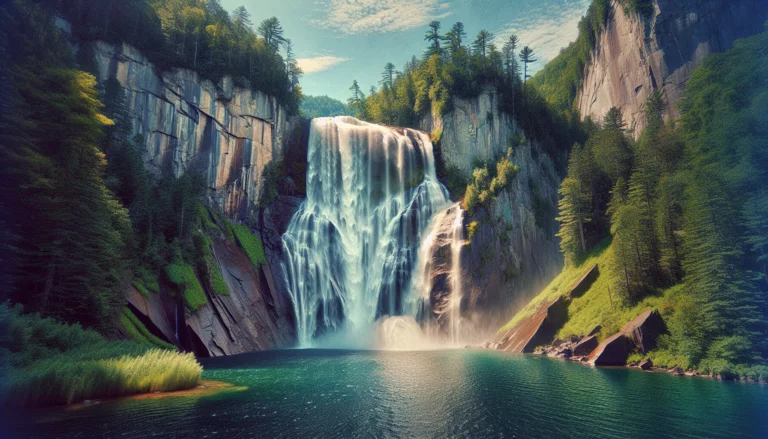Embrace the Challenge: Trekking in Indias Remote Terrain
Himalayan Trekking Essentials
Hitting the trails in the majestic Himalayas takes more than just guts, it takes some solid prep work, too. Here’s a rundown of what you’ll wanna pack and when you should set foot on those epic trails.
Packing List for Himalayan Treks
To make your Himalayan adventure a blast and not a bust, knowing what to toss in the backpack is key. Here’s what you’ll absolutely need:
- Backpack: Go for one that’s easy on the back, holds 60-70 liters, and comes with loads of pockets for your gear (Trekup India).
- Footwear: Your feet are gonna thank you if you score some top-notch boots with ankle support and killer grip. Those trails aren’t gonna tackle themselves!
- Clothing:
- Base Layer: Dry-fit shirts, full sleeves, maybe collared to keep the sunburn away and dry in a jiffy (Indiahikes).
- Mid Layer: Fleece coats and snug sweaters.
- Outer Layer: Think like a burrito—wrap in warmth with a puffy jacket, rentals are a thing (Indiahikes).
- Rainwear: Waterproof jacket and pants for those “just in case” moments.
- Gadgets and Electronics: No power outlets in the wild—grab a portable charger, flash some light with a headlamp, and capture all the glory with a camera.
- Personal Toiletries and Hygiene Items: Go green with biodegradable soap, toothpaste, handy dandy wipes, hand cleaner, and a travel towel.
- Miscellaneous: Don’t squint—wear sunglasses. Block the rays with sunscreen, shade yourself with a wide-brimmed hat, grab some trekking poles, and maybe a first-aid kit for those “whoops” moments.
| Item Category | Must-Have Gear |
|---|---|
| Backpack | 60-70 liters, super comfy, spacious pockets (Trekup India) |
| Footwear | Durable boots with ankle support |
| Clothing (Base Layer) | Dry-fit shirts, long sleeves |
| Clothing (Mid Layer) | Cozy sweaters, fleece jackets |
| Clothing (Outer Layer) | Puffy jacket (Indiahikes) |
| Rainwear | Waterproof goods |
| Gadgets | Power bank, headlight, camera |
| Toiletries | Biodegradable soap, the works for teeth and hands |
| Miscellaneous | Sunnies, sun block cream, big hat, hiking sticks, basic first-aid stuff |
Best Time to Trek in Nepal
Timing is everything, especially with the Nepalese seasons when planning your trek. Here’s when you should lace up:
- Spring (March-May): Explore places like Annapurna and Everest when everything’s blooming, and it’ll be nice and warm.
- Autumn (September-November): It’s the crowd favorite, with calm weather and clear views for miles. Perfect for snapping crazy good pictures.
- Winter (December-February): For those chilled lower-altitude routes, as the snow upstairs can be a bit too frosty for comfort.
- Monsoon (June-August): Avoid! Trust me, unless you’re a big fan of rain and slugs (leeches).
| Trekking Season | Weather Talk | Highlight Spots |
|---|---|---|
| Spring (Mar-May) | Warm, Flowery | Annapurna, Langtang, Everest |
| Autumn (Sep-Nov) | Calm, Clear | Annapurna, Langtang, Everest |
| Winter (Dec-Feb) | Chilly, Snowy | Stick to lower grounds |
| Monsoon (Jun-Aug) | Wet, Risky | Save it for another season |
So, pack smart, choose the right season, and you’re set for an unforgettable trek in the Himalayas!
Popular Treks in India
India’s got all sorts of treks that take you through some wicked scenery. Let me spill the beans on some killer and lesser-known treks in Himachal Pradesh and Ladakh.
Offbeat Treks in Himachal Pradesh
Himachal Pradesh is like nature’s postcard collection. There’s hidden gold to be found on these trails.
Miyar Valley Trek
- What’s It About: Tucked away in the Lahaul area, the Miyar Valley Trek is great for noobs. It’s like a pep rally of colors that show off both Himachal and Ladakh.
- Max Height: 13,100 feet
- The Goods: Skip the crowded Roopkund and take this peaceful path instead. (Bikat Adventures)
Ghepan Ghat Trek
- What’s It About: Kicking off from Sissu on the Manali-Leh Highway, this trek dances around a neon-blue glacial lake with epic snowy peaks in the background.
- Max Height: 14,600 feet
- The Goods: You get views that even the local experts haven’t peeped. Pretty wild, right? (Bikat Adventures)
Bali Pass Trek
- What’s It About: Connecting Har ki Dun valley to Yamunotri, this trek is like a photoshoot for the Kalanag, Bandarpoonch, and Swargarohini peaks up close.
- Max Height: 16,207 feet
- The Goods: Waterfalls? Check. Lush green meadows? Check. Confluence of rivers? Double-check. (Bikat Adventures)
Unique Treks in Ladakh
Ladakh’s got that jaw-dropping beauty and some serious trekking challenges.
Digar La Trek
- What’s It About: Take on an 18,000 ft pass connecting the Indus Valley and Leh with Nubra Valley.
- Max Height: 18,000 feet
- The Goods: Slide into views of Pangong Tso Lake that’ll leave your heart grinning. (Bikat Adventures)
Here’s a quick cheat sheet for these treks:
| Trek Name | Region | Maximum Altitude (ft) | Key Highlights |
|---|---|---|---|
| Miyar Valley Trek | Himachal Pradesh | 13,100 | For the fresh trekkers, killer views, escape from Roopkund trek |
| Ghepan Ghat Trek | Himachal Pradesh | 14,600 | Electrifying neon lake, secluded, mind-blowing views |
| Bali Pass Trek | Himachal Pradesh | 16,207 | Scenic vistas, river confluence, plush meadows |
| Digar La Trek | Ladakh | 18,000 | Links Indus Valley to Nubra, wraps at Pangong Tso Lake |
These treks are where adventure and nature throw a party together. They offer a wild ride and a chance to see some of the most stunning scenes India has got to show off.
Safety Tips for Trekking
Prepping to trek through India, especially in those majestic-yet-remote Himalayan regions, calls for some solid planning and an eye on safety. Let me share some must-have gear tips and health advice that’ll keep you trekking without a hitch.
Gear and Equipment Recommendations
Getting your gear right? It’s a game-changer. These essentials should be on your checklist:
- Apparel: Dress smart. Opt for comfy, moisture-busting clothes to keep dry. Think layers—it’s all about adapting to the temperature surprises.
- Hiking Boots: Your feet’s best friends. Grab some sturdy boots with killer grip and ankle support. The Trek and MH series by Decathlon are solid picks for those sky-high trails.
- Backpack: Snag one that balances weight like a champ and is roomy enough for your essentials.
- Navigation Tools: Not getting lost is the aim. Equip yourself with maps, GPS, and maybe buddy up with a savvy local guide.
- Camping Gear: Pack a tent that won’t ghost you and a snug sleeping bag for the chill.
- First Aid Kit: Don’t skimp on this. Bandages, antiseptics—you name it, have it ready for patching up small mishaps.
| Essential Item | Example |
|---|---|
| Clothing | Moisture-busting layers |
| Hiking Boots | Decathlon Trek series |
| Backpack | Balanced weight |
| Navigation Tools | Maps, GPS, Local Guide |
| Camping Gear | Tent, Sleeping Bag |
| First Aid Kit | Bandages, Antiseptics |
Altitude and Health Concerns
High-altitude trekking? It’s a health juggling act. Spot these hazards and know what to do:
- Altitude Sickness: Headaches, dizziness, or a stomach doing flip-flops? They’re red flags. If they hit, head downhill pronto.
- Hydration and Nutrition: Keep the fluids flowing and munch on energy-packed snacks. Water purification tablets are lifesavers.
- Hygiene: Staying clean keeps the bugs away. Hand sanitizers and biodegradable wipes are your best pals.
- Health Preparation: Chat with your doctor before setting out. Pack any meds and be ready for minor health hiccups.
Let your body catch up with the heights. Spending a few days at mid-level altitudes helps you adjust just right. Remember, take care of yourself first to make the most of your trekking adventure through India’s incredible backdrops.
Curious for more? Head over to Himalaya Shelter for more tips.
Trekking Routes and Seasons
Ideal Seasons for Trekking
Trekking in India is a vibrant adventure that changes with each season. Picking the best time to trek can transform your journey from ordinary to extraordinary. Here’s the lowdown:
Spring (March to May)
Spring in India is downright magical for trekking. With moderate temps and bursting flowers, it’s perfect for those Himalayan trails.
| Region | Ideal Time |
|---|---|
| Himachal Pradesh | March to May |
| Uttarakhand | March to May |
| Western Ghats | March to May |
Summer (June to August)
In this toasty season, aim high—literally! Treks in places like Ladakh and Zanskar shine bright, with clear paths and chill vibes (by temperature, not altitude!).
| Region | Ideal Time |
|---|---|
| Ladakh | June to August |
| Zanskar | June to August |
Autumn (September to November)
Autumn vibes are strong! After the monsoons, skies clear up for some jaw-dropping views and comfy weather.
| Region | Ideal Time |
|---|---|
| Sikkim | September to November |
| Uttarakhand | September to November |
| Himachal Pradesh | September to November |
Winter (December to February)
This season ain’t for the faint-hearted! For the brave hearts, winter treks offer a snowy spectacle and a heart-racing thrill.
| Region | Ideal Time |
|---|---|
| Himachal Pradesh | December to February |
| Uttarakhand | December to February |
High-Altitude and Winter Treks
Ready for a killer workout with views that slay? High-altitude and winter treks are for the strong-willed. Be prepped with solid gear and some serious fitness.
High-Altitude Treks
These treks can be tough, soaring above 4,500 meters, but boy, are the sights worth it! Lug around a snug-fit backpack (50-60 liters) like the pros at Indiahikes.
| Trek | Altitude |
|---|---|
| Stok Kangri, Ladakh | 6,153 meters |
| Roopkund, Uttarakhand | 5,029 meters |
| Kanchenjunga Base Camp | 5,143 meters |
Winter Treks
Bundle up! Go for layers: a dry-fit base, sweater, fleece, and a cozy padded jacket (Indiahikes). Here are the fan favorites:
| Trek | Best Time |
|---|---|
| Chadar Trek, Ladakh | January to February |
| Kedarkantha, Uttarakhand | December to March |
| Har Ki Dun, Uttarakhand | December to March |
Don’t forget your tools of the trade: maps, solid GPS gear, and a savvy local guide to keep you on track (Himalaya Shelter). Health first—watch for altitude sickness and keep clean (Himalaya Shelter).
Gearing up and knowing when to go turns your trek in India from a trip to a tale worth retelling. Enjoy the hike!
Must-Visit Tourist Attractions
Cultural Gems in India
When I wander through the vibrant and colorful streets of India, my heart always jumps with excitement to unearth its incredible cultural and architectural goodies. Here are some of my personal favorite must-visit spots that you really can’t miss:
Amer Fort in Jaipur: Imagine walking through history—this fort, a UNESCO World Heritage Site, steals the show with a fantastic mix of Mughal and Rajput styles. Sitting proudly on a hill, it gives you stunning views of Maota Lake. It’s like time travel when you roam its halls and courtyards.
Hawa Mahal in Jaipur: With its jaw-dropping architecture, the ‘Palace of Winds,’ created by Maharaja Sawai Pratap Singh, is a must-see. Its 953 windows allowed the royal ladies to peek at city life while staying hidden. You’ll be awestruck by the craftsmanship and intricate lattice work.
Rishikesh in Uttarakhand: This place is a haven for anyone on a soul-searching journey. Known as the “Yoga Capital of the World,” Rishikesh is speckled with countless ashrams and serene temples along the Ganges River. The spiritual vibe at Triveni Ghat and Trayambakeshwar Temple is contagious.
Taj Mahal in Agra: No words can genuinely sum up this mesmerizing white-marble monument of love, built by Emperor Shah Jahan in the 1600s. As one of the New Seven Wonders of the World, it stands as a symbol of undying devotion. And hey, while in Agra, make sure you don’t miss Itmad-ud-Daulah’s Tomb and the Agra Fort.
Natural Wonders of India
India’s nature doesn’t just sit in the shadow of its cultural wonders; it shines brightly on its own. Here are some natural attractions that I’ve never been able to skip:
- Jim Corbett National Park: Hiding in the lush landscapes of Uttarakhand, this park is a thrill-seeker’s delight. It boasts the highest count of Bengal tigers in India. Imagine cruising through 500 square miles of wild terrain on a jeep safari, catching sight of elephants, bears, and over 600 bird species—it’s an adventure of a lifetime.
| Natural Wonders | Highlights |
|---|---|
| Jim Corbett National Park | Epic tiger sightings, jeep safaris, amazing wildlife diversity |
| Amer Fort | Stunning architecture, sits majestically on a hill |
| Hawa Mahal | Historical hide-and-seek windows, intriguing design |
| Rishikesh | Yoga capital, spiritual ashrams along the sacred river |
| Taj Mahal | World-famous white-marble icon, awe-inspiring love story |
Traveling across India is like opening a treasure chest full of historical marvels and unspoiled natural beauty. It’s no wonder India holds a special place for thrill-seekers and explorers alike.

